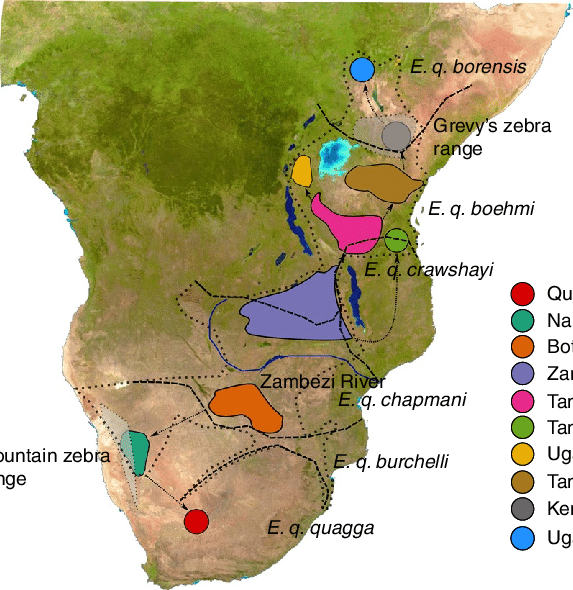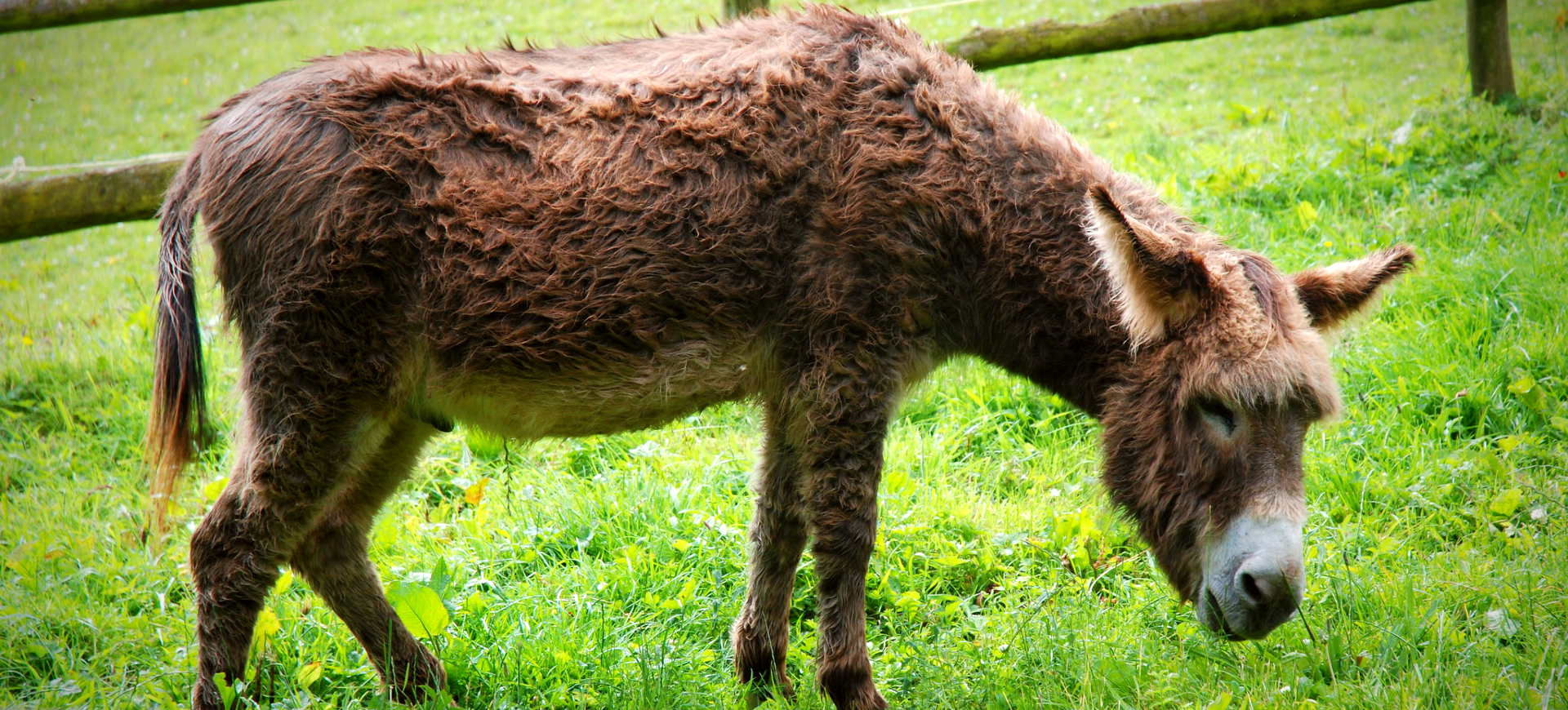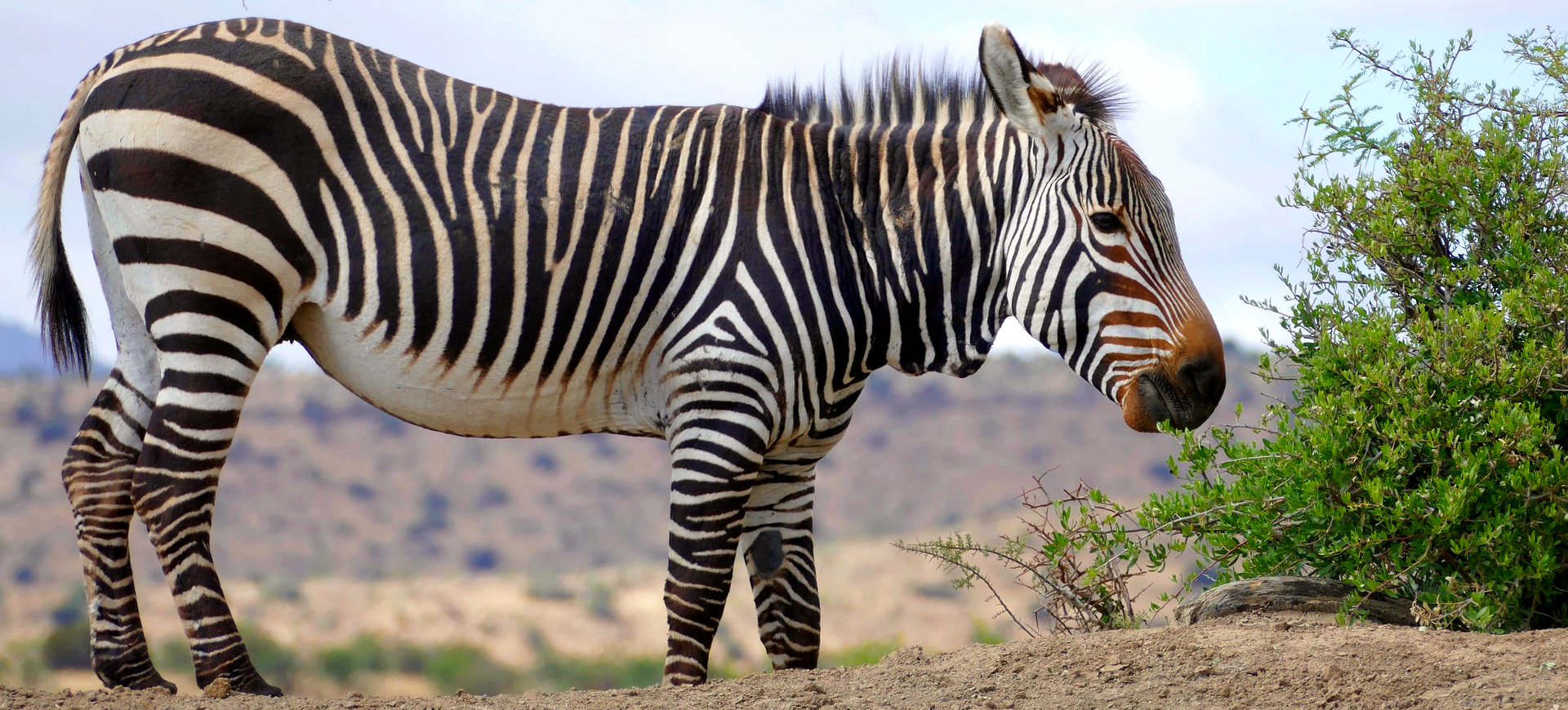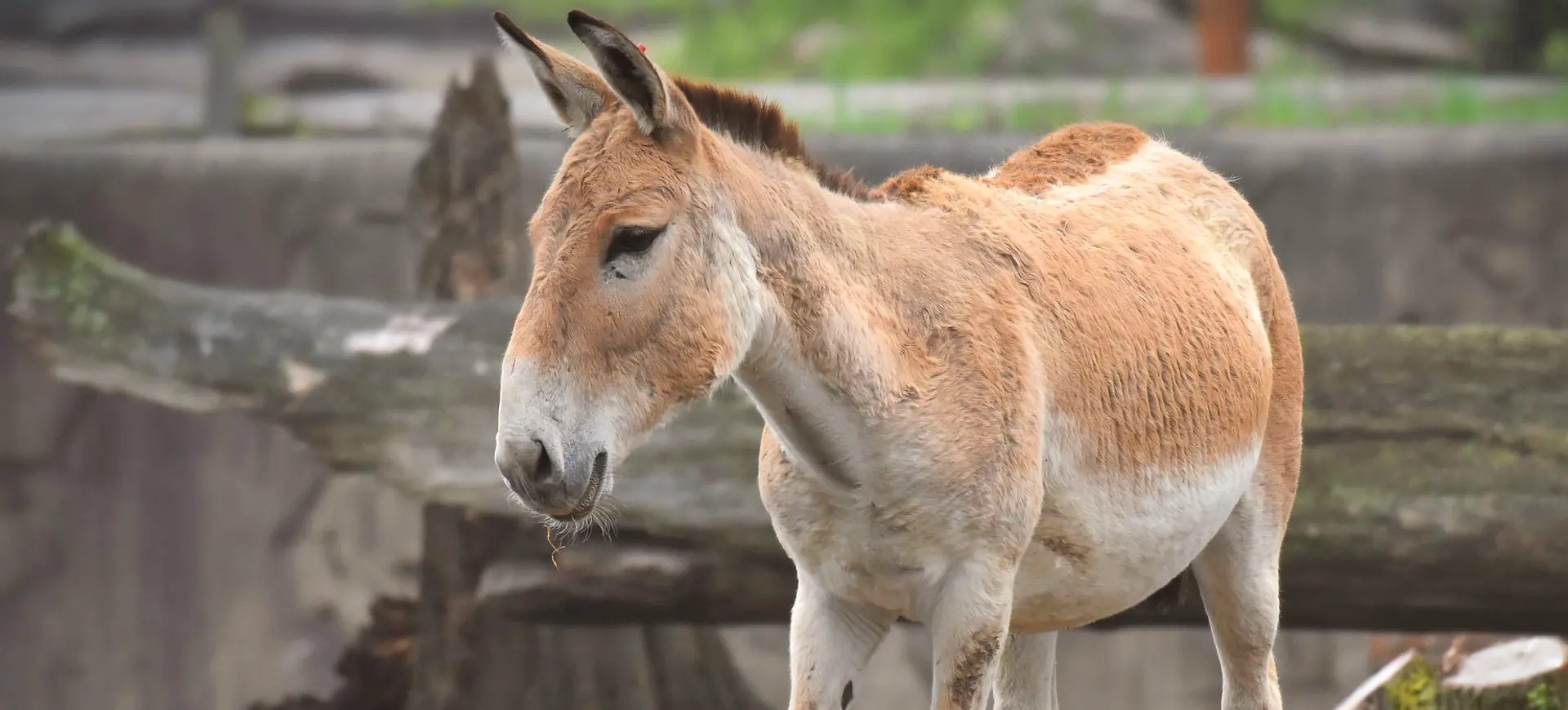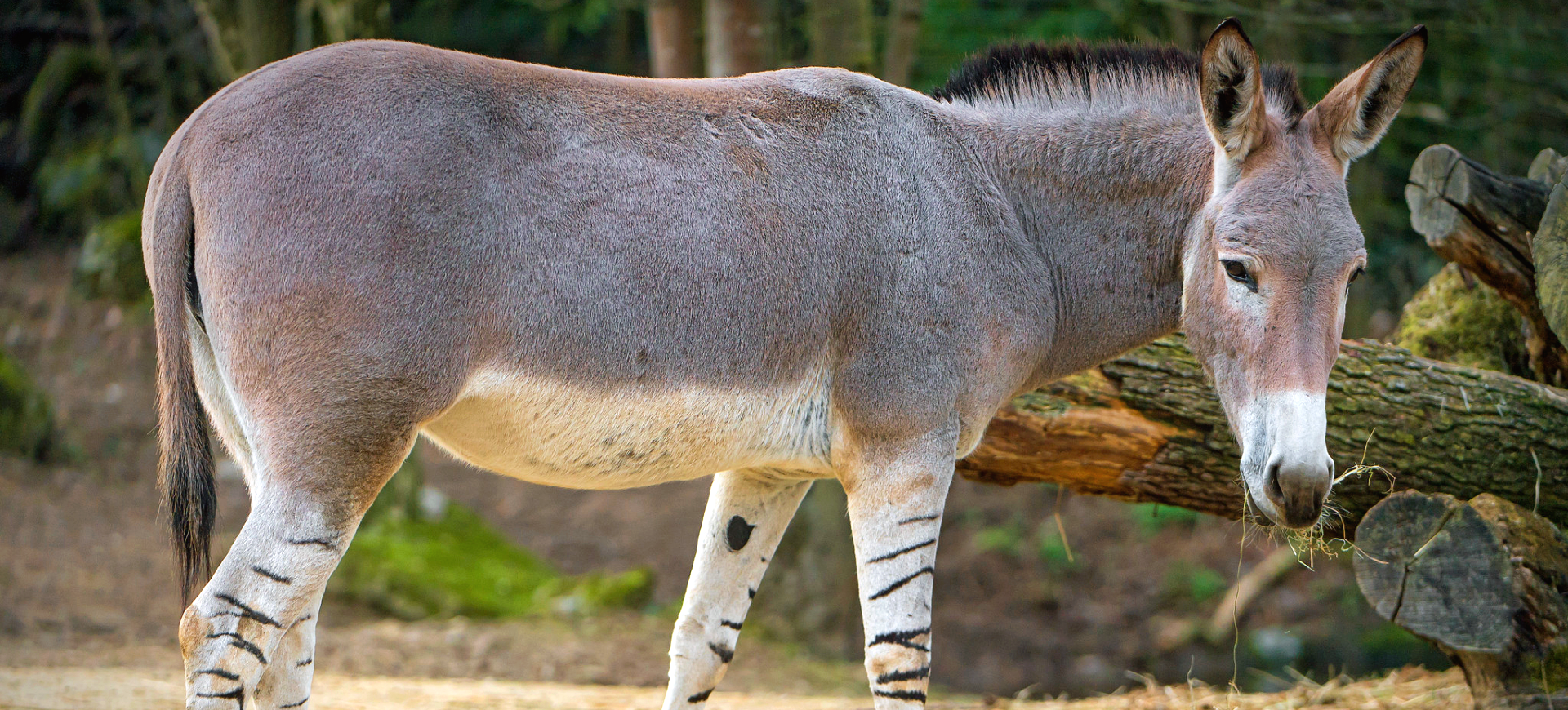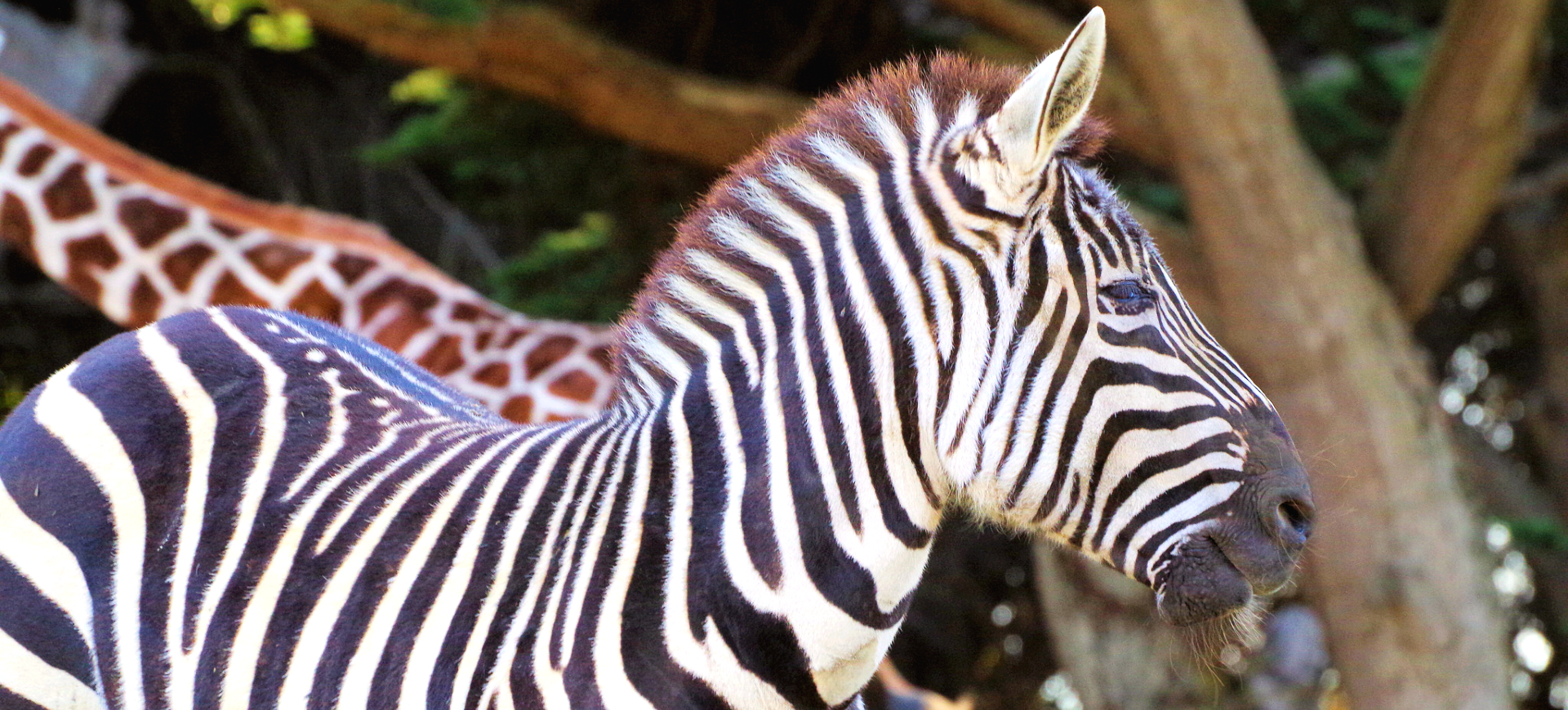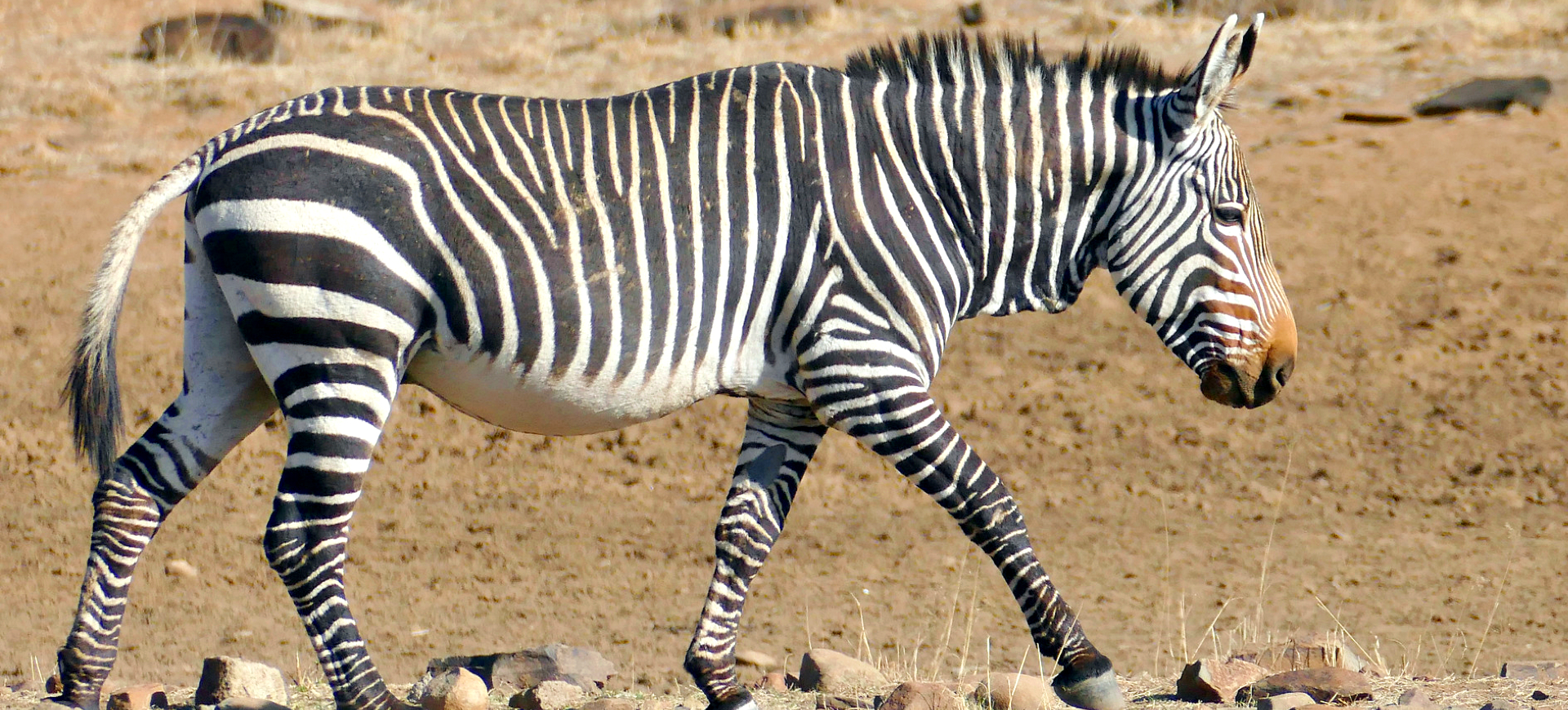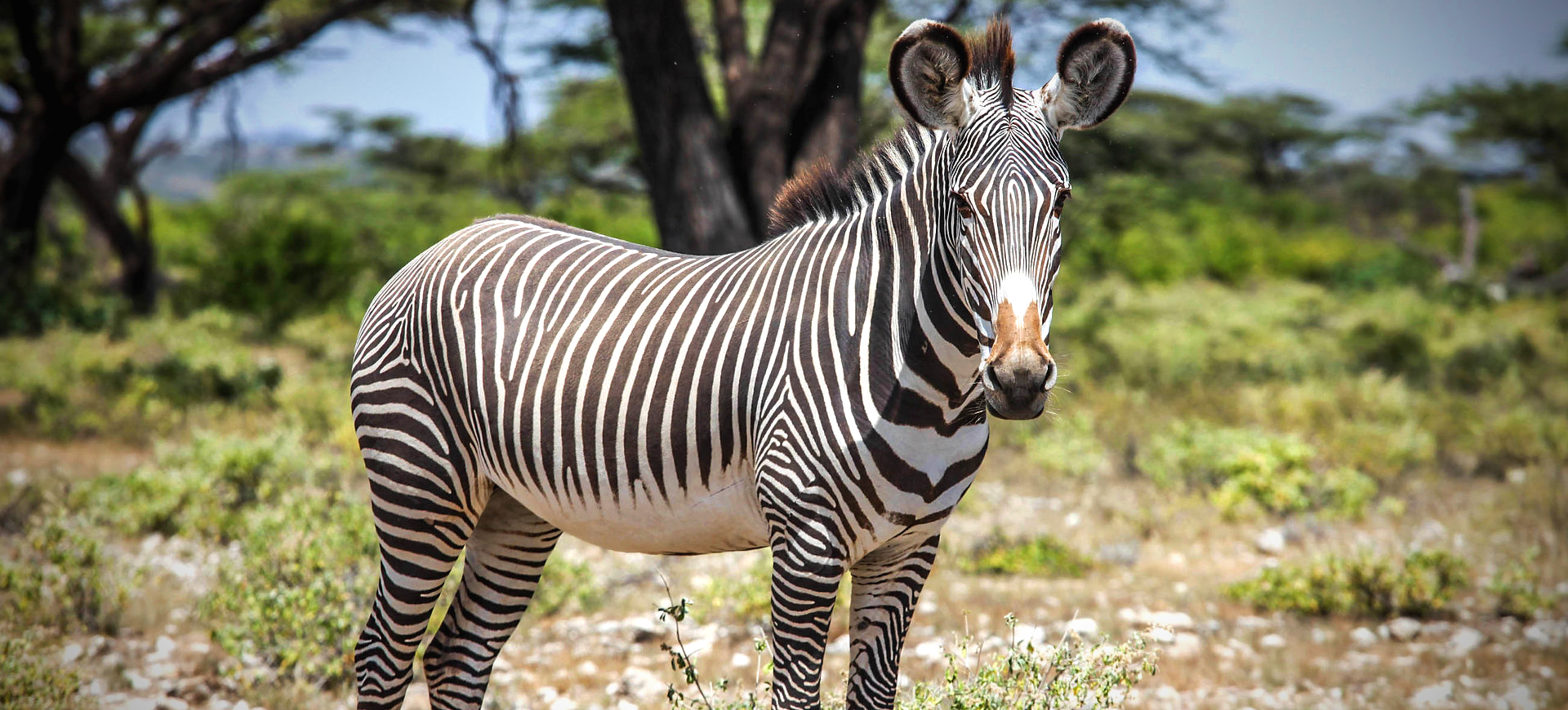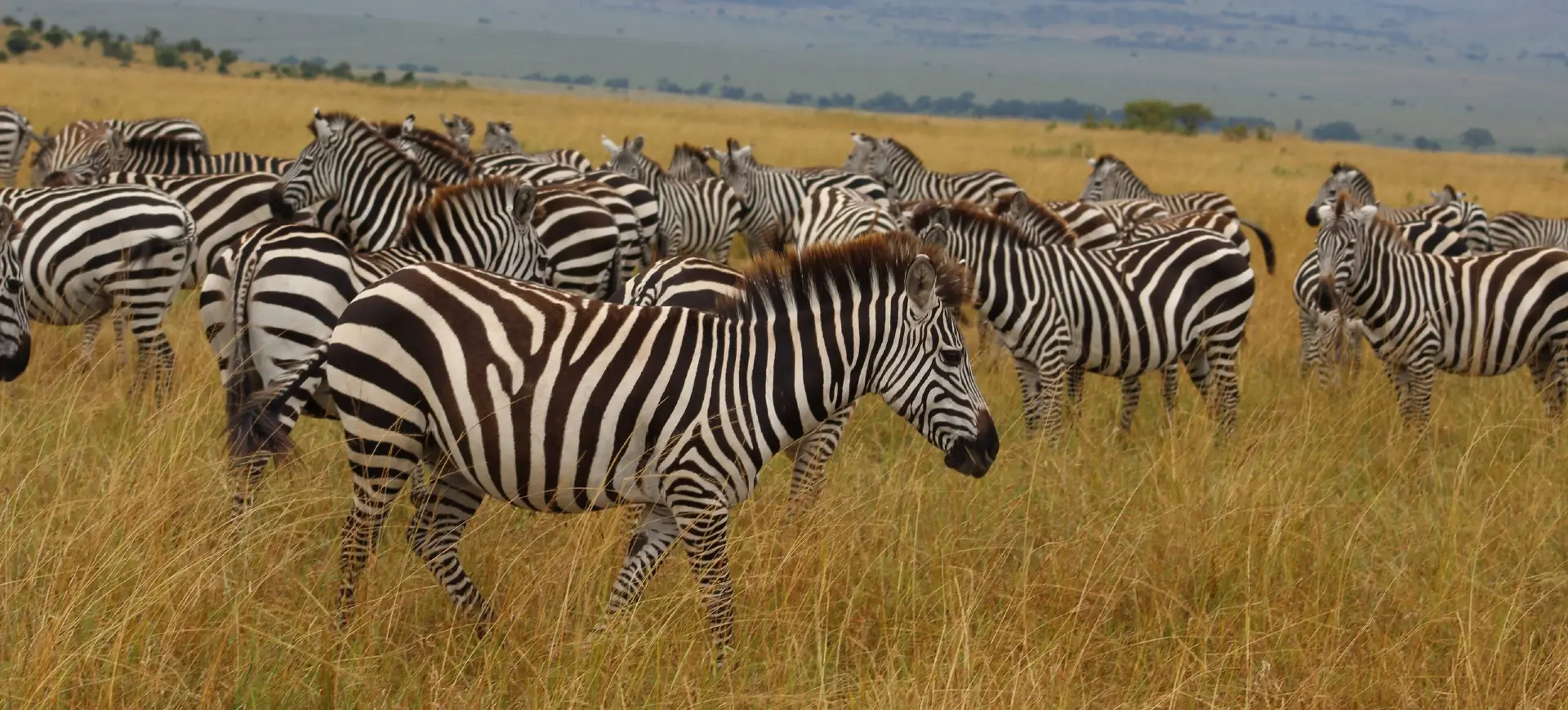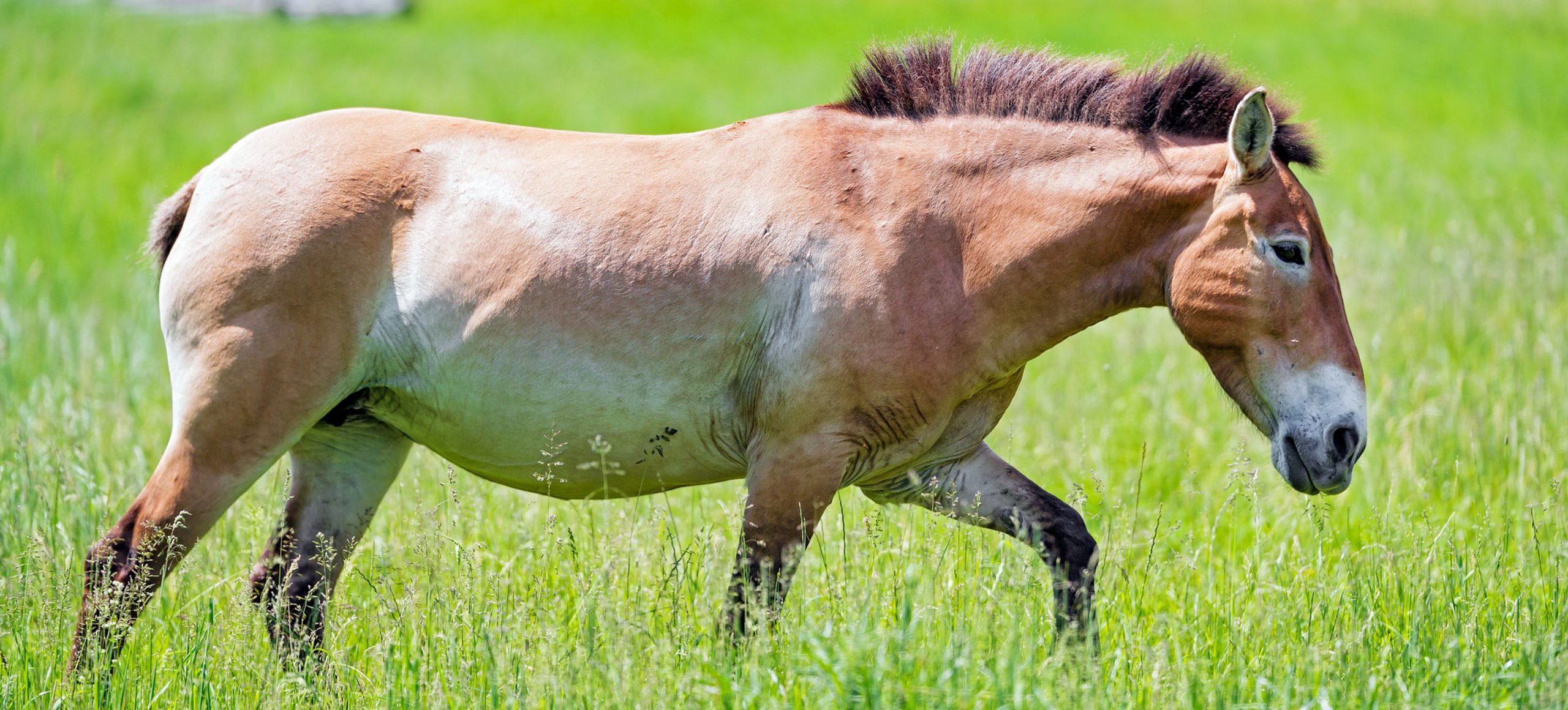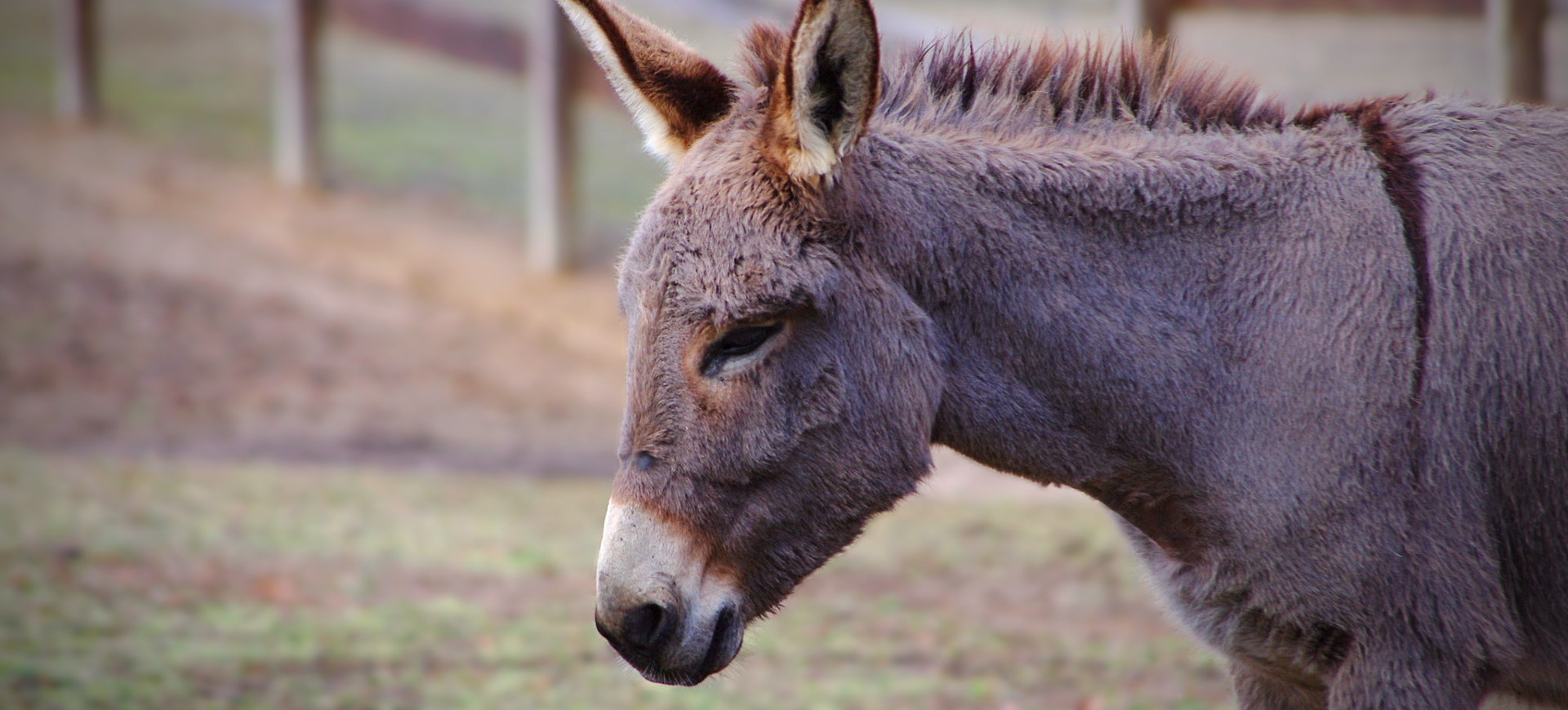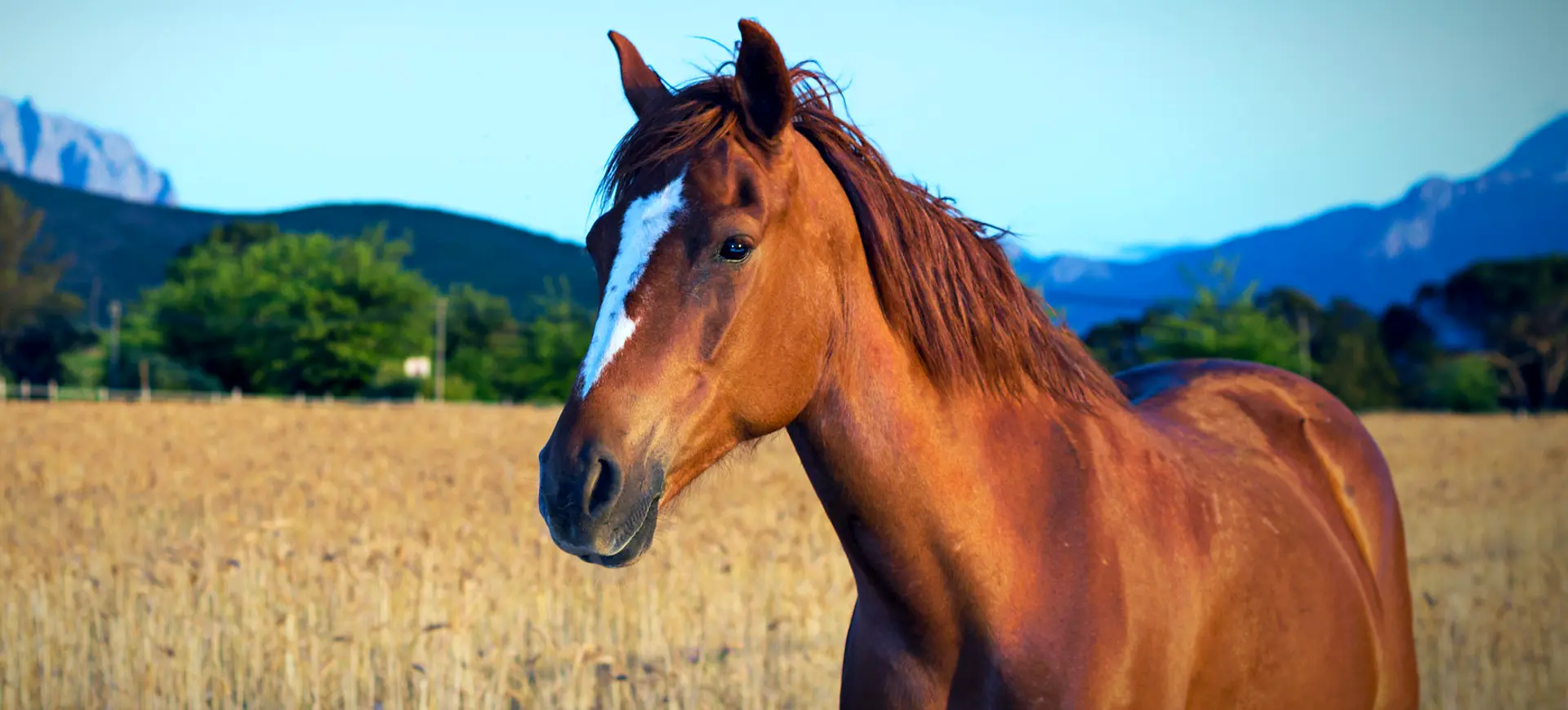Overview
Burchell’s Zebra, scientifically known as Equus quagga burchellii, is a subspecies of the plains zebra found in the savannas of southern Africa. This Zebra is an iconic symbol of the African wilderness, distinguished by its unique pattern of black and white stripes, which are as unique to each individual as fingerprints are to humans. The stripes serve multiple purposes, including camouflage in grassy habitats, heat management, and deterring biting flies. Burchell’s Zebras live in groups, usually consisting of a single stallion, several mares, and their offspring, showcasing complex social structures that facilitate survival in challenging environments.
This subspecies is known for its adaptability. It inhabits a range of environments, from grasslands to open woodlands, where it grazes on a variety of grasses. Burchell’s Zebra plays a crucial role in its ecosystem by impacting the distribution of plant species, serving as prey for large predators, and contributing to the nutrient cycle through its grazing activity. Despite facing threats from habitat loss and hunting in certain areas, conservation efforts have helped stabilize some populations, emphasizing the importance of this Zebra as part of Africa’s biodiversity.
Conservation of Burchell’s Zebra involves protecting its habitat and ensuring sustainable management of land and water resources. The subspecies’ ability to migrate long distances for food and water makes preserving migration corridors vital. Conservation initiatives also focus on mitigating human-wildlife conflict and illegal hunting, ensuring that Burchell’s Zebra thrives in the wild for future generations to admire and study.
Taxonomy
Kingdom
Phylum
Class
Order
Family
Genus
Species
Sub Species
Type
Current distribution:
Burchell's Zebra is distributed across several countries in southern Africa, including parts of Namibia, Botswana, South Africa, and Zimbabwe. While some populations are stable and protected within national parks and reserves, others face habitat loss and fragmentation threats. Creating wildlife corridors and maintaining large, protected areas are essential for ensuring the connectivity between isolated populations, allowing for genetic diversity and the natural migration patterns that are crucial for their survival.
Efforts to monitor and manage Burchell's Zebra populations involve regular counts, research on their ecological impact, and community-based conservation programs. These initiatives help to balance the needs of wildlife with those of local communities, promoting coexistence and the sustainable use of natural resources. The success of these programs is vital for the future of Burchell's Zebra and the ecosystems they help to maintain.
Physical Description:
Burchell’s Zebra is characterized by striking black-and-white stripes that extend to its belly, distinguishing it from other zebra species whose stripes typically do not cover the underbelly. Adults can reach lengths of up to 8.2 feet from head to tail, stand about 4.5 to 5.3 feet at the shoulder, and weigh between 440 and 990 pounds. The patterns of stripes are unique to each individual, providing a means of identification among zebras and helping researchers study their behavior and population dynamics.
The body of Burchell’s Zebra is robust and well-adapted to life in the savannas, with strong legs for running up to 40 miles per hour to escape predators. Their hooves are designed to withstand their habitat’s hard, dry terrain. The mane, which stands erect along the neck, is also striped, continuing the pattern that covers the rest of the body, and their tails have a tuft of hair at the end, which they use to swat away flies and other pests.

Lifespan: Wild: ~20 Years || Captivity: ~25 Years

Weight: Male & Female: 440-990 lbs (200-450 kg)

Length: Male & Female: 91-98 in (231-249 cm)

Height: Male & Female: 54-64 in (137-163 cm)

Top Speed: 40 mph (64 km/h)
Characteristic:
Native Habitat:
Burchell’s Zebra is native to southern Africa’s savannas, grasslands, and open woodlands. This subspecies has adapted to various habitats within this range, from the dry regions of Namibia to the wetter regions of the Okavango Delta. Their habitat choice is largely influenced by the availability of grass for grazing and water for drinking, essential resources for their survival.
Their ability to inhabit various environments has been crucial to the subspecies’ survival, allowing populations to move and adapt to changing environmental conditions. Conservation efforts aim to preserve these diverse habitats, ensuring the continued presence of Burchell’s Zebra in its native range. This includes protecting critical water sources and vital migration routes for their seasonal movements.
Biomes:
Biogeographical Realms:
Continents:
Countries:
Diet:
Diet & Feeding Habits:
Burchell’s Zebra is predominantly a grazer. Its diet mainly consists of grasses, which it prefers when they are short and young. Its digestive system is adapted to efficiently process a high-fiber diet, allowing it to thrive on poorer-quality vegetation that many other herbivores cannot digest. This ability to utilize a wide range of grasses makes Burchell’s Zebra a key species in managing the savanna ecosystem, preventing overgrowth and promoting biodiversity.
In times of drought or scarce resources, Burchell’s Zebra can travel great distances to find suitable grazing areas, demonstrating remarkable resilience and adaptability. They often graze in mixed-species groups, which can provide additional protection against predators. Their water-dependent nature requires them to drink almost daily, making them frequent visitors to waterholes where they must be cautious of predators.
Mating Behavior:
Mating Description:
Burchell’s Zebra forms stable social groups known as harems, consisting of one stallion, several mares, and their young. This social structure plays a crucial role in their mating system, where the dominant stallion has breeding rights with the mares in his group. Mating can occur throughout the year but tends to peak during the early rainy season when food is abundant and conditions are favorable for raising offspring.
Gestation in Burchell’s Zebra lasts approximately 12 to 14 months, resulting in the birth of a single foal. Newborns are highly precocial and can stand and walk within an hour of birth, which is critical for evading predators. Mares usually give birth to a foal every two to three years, depending on environmental conditions and the mare’s health, ensuring that each offspring receives adequate care and resources for a strong start in life.
Reproduction Season:
Birth Type:
Pregnancy Duration:
Female Name:
Male Name:
Baby Name:
Social Structure Description:
The social structure of Burchell’s Zebra is fascinating and complex, centered around the family group, or harem, which consists of a dominant stallion, several mares, and their offspring. These family groups often join together with others to form large herds, especially when migrating or accessing water, which enhances protection against predators. Within the harem is a clear social hierarchy, with mares having a pecking order usually based on seniority. This structured social organization is crucial for the survival of individuals, as it provides safety, facilitates breeding, and helps in the upbringing of foals.
Bachelor groups are another component of Burchell’s Zebra’s social structure, comprising young males who have not yet acquired a harem. These groups serve as a training ground where young stallions can learn social skills, engage in play fighting, and prepare for future challenges when competing for mates. The dynamics within these bachelor groups are less rigid than in the harems, with alliances forming and dissolving as individuals come and go.
Groups:
Conservation Status:
Population Trend:
Burchell’s Zebra populations are dispersed across southern Africa, with significant numbers found in protected areas such as national parks and wildlife reserves. These protected populations benefit from measures to conserve natural habitats and regulate hunting. However, zebras outside protected areas face ongoing challenges, including conflict with farmers, fence-related barriers to migration, and reduced access to water sources.
Conservation efforts focus on habitat preservation, creating wildlife corridors to connect fragmented populations, and implementing sustainable land management practices to benefit wildlife and local communities. Research and monitoring continue to be essential for understanding population dynamics and the effectiveness of conservation strategies. Engaging local communities in conservation efforts is also key to ensuring the long-term survival of Burchell’s Zebra and the ecosystems they inhabit.
Population Threats:
The primary threats to Burchell’s Zebra include habitat loss and fragmentation, competition with livestock for grazing and water, and illegal hunting. These factors contribute to the decline in suitable habitats and the availability of resources, impacting zebra populations. Climate change also poses a long-term threat, potentially altering the ecosystems where Burchell’s Zebra lives and affecting the availability of food and water.
Human-wildlife conflict is an ongoing challenge, as zebras can conflict with farmers by feeding on crops or competing with domestic animals for water. Efforts to mitigate these conflicts include developing community-based conservation programs that provide incentives for wildlife protection and implementing sustainable agricultural practices.
Conservation Efforts:
Conservation strategies for Burchell’s Zebra include legal protection, habitat conservation, and the establishment of wildlife corridors to ensure genetic flow between populations. Protected areas play a vital role in providing safe habitats free from the pressures of agriculture and development. Conservation organizations and governments collaborate on research, monitoring, and management plans to address the challenges faced by Burchell’s Zebra.
Community involvement is critical for the success of conservation efforts, with initiatives aimed at promoting coexistence and providing economic benefits from wildlife tourism. Educational programs raise awareness about the importance of zebras and their role in the ecosystem, fostering a culture of conservation. International cooperation is also crucial, as the conservation of migratory species like Burchell’s Zebra requires cross-border efforts to protect shared natural heritage.
Additional Resources:
Fun Facts
- Each Burchell’s Zebra has a distinctive stripe pattern, as unique as human fingerprints, used for identification by researchers.
- The black and white stripes help regulate temperature, with black stripes absorbing heat and white stripes reflecting it.
- The stripes may also create a dazzling effect that confuses predators, especially when zebras move as a group.
- Burchell’s Zebras form tight-knit family groups called harems, which consist of one stallion, several mares, and their offspring.
- They communicate using a variety of sounds, including barks, snorts, and whinnies, each carrying specific meanings within the group.
- They can live in both arid and savanna environments and demonstrate remarkable resilience and adaptability.
- Zebras can run up to 40 mph (64 km/h) shortly after birth, a critical survival skill to evade predators.
- They help manage grassland health by grazing, preventing overgrowth and promoting biodiversity.
- Unlike some desert-adapted species, Burchell’s Zebras need to drink water almost daily, making them frequent visitors to waterholes.
- Some populations of Burchell’s Zebras undertake long migrations to find food and water, showcasing their endurance and navigational skills.


